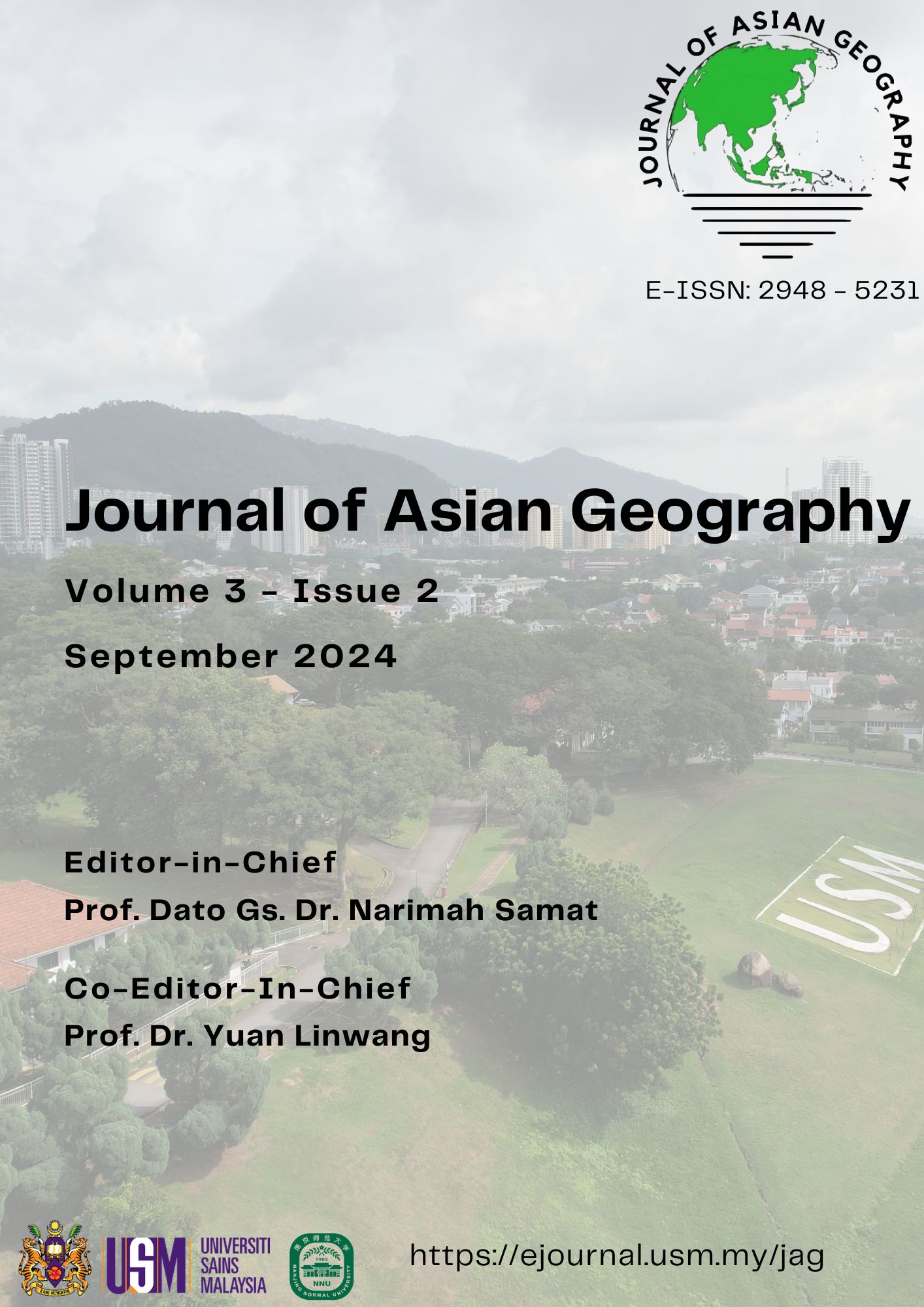The Impact of Population Growth on Open Area in the Coastal Area of Makassar City
DOI:
https://doi.org/10.36777/jag2024.3.2.7Keywords:
Population growth, Open area, Built-up area, Urbanization, Coastal areaAbstract
Makassar City, as the capital of South Sulawesi Province, has advantages over other cities. Its status as an educational center in eastern Indonesia attracts people seeking education and employment. As a coastal area, Makassar City provides various eco-services with environmental, economic, and social value, which is a primary factor driving urbanization. The movement of people from villages to cities encourages rapid population growth and development, resulting in the conversion of open areas into built-up areas. Changes in land use and land cover are driven by human activities to meet various needs, such as housing, industry, and infrastructure. Monitoring land use changes can be achieved through satellite imagery, and this study utilizes data from 1997, 2002, and 2017. The aim of this study is to analyze changes in land use, particularly the transformation of open areas into built-up areas. The analysis technique employed is spatial analysis. Landsat data, including satellite imagery from L5_TM for 1997, L7_ETM for 2002, and L8_OLI for 2017, serve as primary data for classifying open areas and built-up areas. The results of the analysis indicate that the built-up area increased by 3.23% from 1997 to 2002, and by 10.94% from 2002 to 2017. Conversely, open areas experienced a decrease of 14.17% from 1997 to 2017. This change highlights the growing built-up area and its impact on the reduction of open areas. The data on these changes will provide valuable input for the government and the community as a basis for decision-making regarding environmental management and planning in the future.

Downloads
Published
Issue
Section
License
Copyright (c) 2024 Journal of Asian Geography

This work is licensed under a Creative Commons Attribution 4.0 International License.

